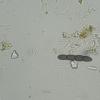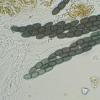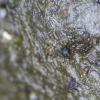
22-03-2018 21:48
 Blasco Rafael
Blasco Rafael
Hola , he visto estos peritecios sobre rama de Jun

20-03-2018 23:52
Hello forum,would anyone have literature about Pod

18-03-2018 23:45
Valencia Lopez Francisco JavierHola a todos/asEstas Tricharina crecían en un peq

19-03-2018 17:34
Thomas LæssøeSweden, Scania, Bårslöv, 30.XI.1994, leg. Sven-�

19-03-2018 20:42
 Marc Detollenaere
Marc Detollenaere
Good evening everyone, On dung of sheep I recentl

20-03-2018 19:16
 Bernard Declercq
Bernard Declercq
Good evening, Colleted on corticated twigs of Pla

19-03-2018 15:15
Thomas LæssøeSweden, Scania, Kavrö, 22.VI.2017, on a dicot ste

12-03-2018 23:39
 Marc Detollenaere
Marc Detollenaere
Good evening everybody, In La Ste-Baume in Pr

16-03-2018 14:14
 Christopher Engelhardt
Christopher Engelhardt
Hi,these grow on what I think to be old & dry
Sporormiella
Ueli Graf,
22-03-2018 22:27
 Hello,
Hello,I found this Sporormiella on dung from deer. I have designated that as S. australis. Is that correct?
Greeting
Ueli
Peter Püwert,
22-03-2018 23:46
Re : Sporormiella
Hi Ueli,
if still a few masses were to be valued one could say in addition also more exact.
Greetings Peter.
if still a few masses were to be valued one could say in addition also more exact.
Greetings Peter.
Ueli Graf,
23-03-2018 18:01

Re : Sporormiella
Hallo Peter,
ja die Masse habe ich glatt vergessen einzugeben.
Sp. 37,5 - 40 x 7,5 - 8 mü
Lieber Gruss
Ueli
ja die Masse habe ich glatt vergessen einzugeben.
Sp. 37,5 - 40 x 7,5 - 8 mü
Lieber Gruss
Ueli



